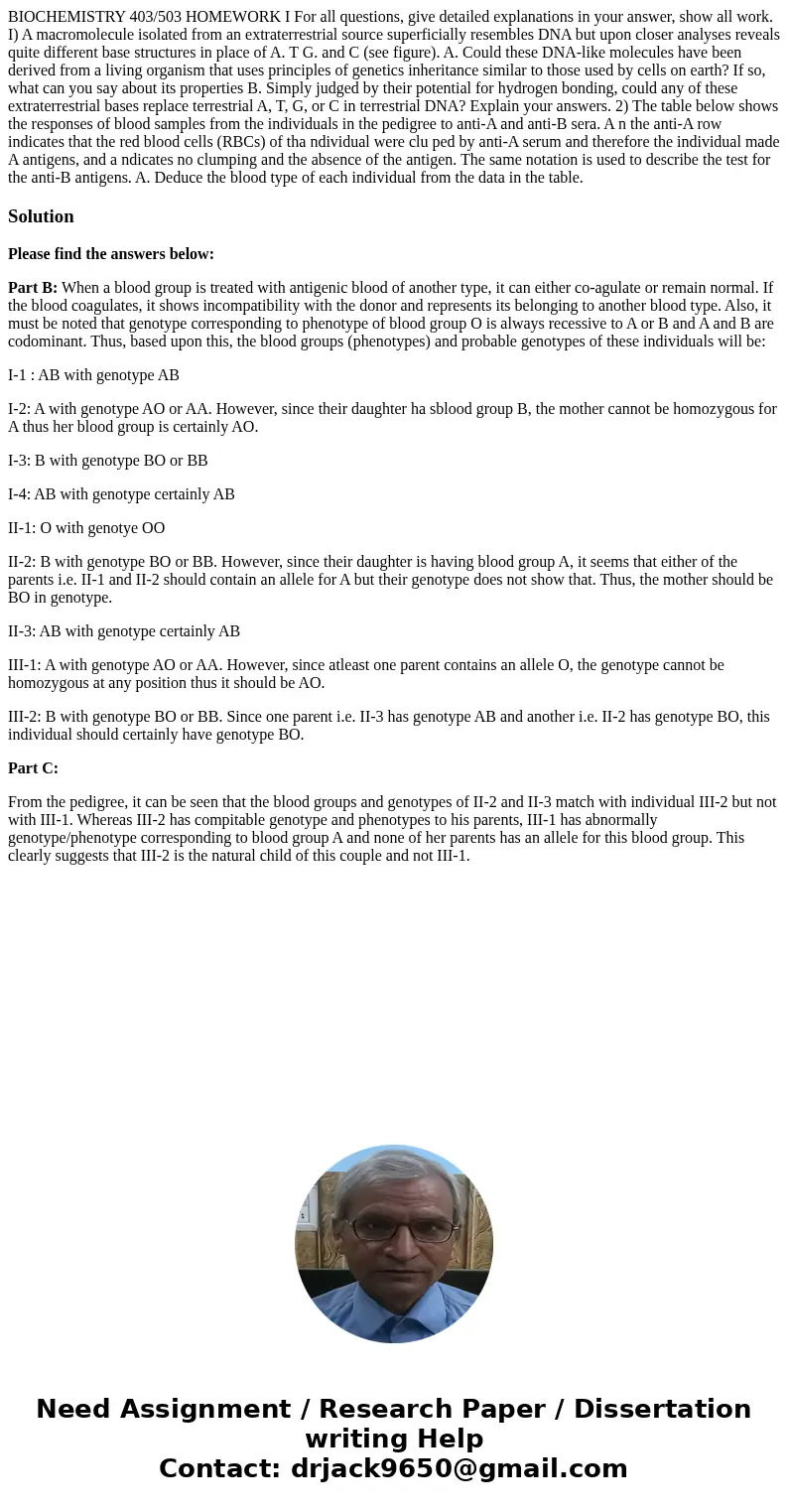BIOCHEMISTRY 403503 HOMEWORK I For all questions give detail
Solution
Please find the answers below:
Part B: When a blood group is treated with antigenic blood of another type, it can either co-agulate or remain normal. If the blood coagulates, it shows incompatibility with the donor and represents its belonging to another blood type. Also, it must be noted that genotype corresponding to phenotype of blood group O is always recessive to A or B and A and B are codominant. Thus, based upon this, the blood groups (phenotypes) and probable genotypes of these individuals will be:
I-1 : AB with genotype AB
I-2: A with genotype AO or AA. However, since their daughter ha sblood group B, the mother cannot be homozygous for A thus her blood group is certainly AO.
I-3: B with genotype BO or BB
I-4: AB with genotype certainly AB
II-1: O with genotye OO
II-2: B with genotype BO or BB. However, since their daughter is having blood group A, it seems that either of the parents i.e. II-1 and II-2 should contain an allele for A but their genotype does not show that. Thus, the mother should be BO in genotype.
II-3: AB with genotype certainly AB
III-1: A with genotype AO or AA. However, since atleast one parent contains an allele O, the genotype cannot be homozygous at any position thus it should be AO.
III-2: B with genotype BO or BB. Since one parent i.e. II-3 has genotype AB and another i.e. II-2 has genotype BO, this individual should certainly have genotype BO.
Part C:
From the pedigree, it can be seen that the blood groups and genotypes of II-2 and II-3 match with individual III-2 but not with III-1. Whereas III-2 has compitable genotype and phenotypes to his parents, III-1 has abnormally genotype/phenotype corresponding to blood group A and none of her parents has an allele for this blood group. This clearly suggests that III-2 is the natural child of this couple and not III-1.

 Homework Sourse
Homework Sourse